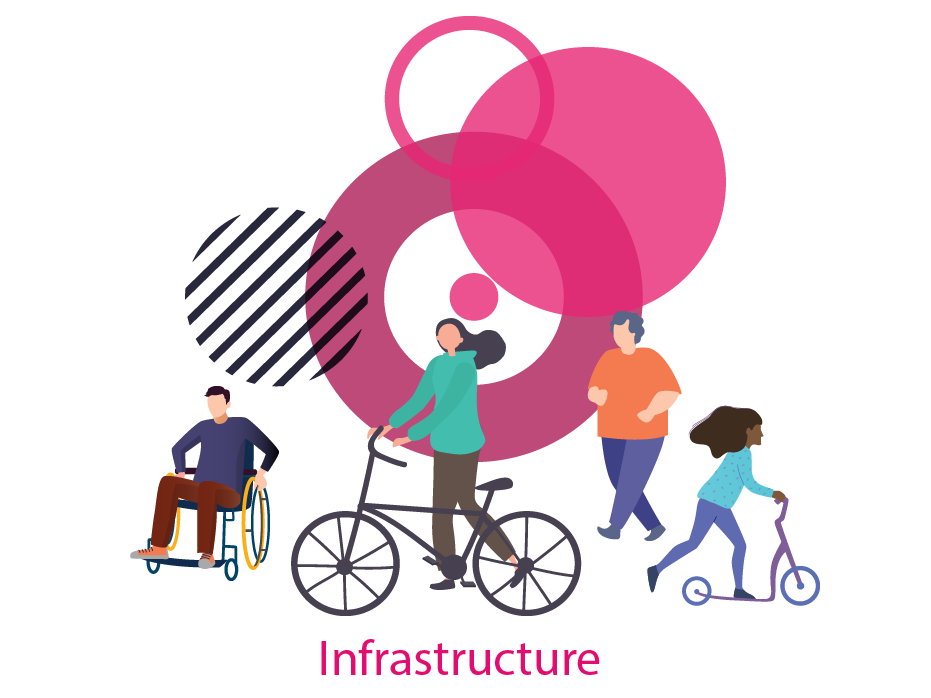To join the Infrastructure Sector, please type your email in the subscription bar provided below.
The Infrastructure Sector is co-led by Tresa Carter from BikeWalkKC, and Bailey Waters with the City of Kansas City, Missouri.
Miro Board
Miro is an interactive visual collaboration software that mimics the process of using sticky notes in a virtual setting.
Click below to see the feedback from the Infrastructure Sector meetings.
Have a question?
Feel free to contact us!
KCPA Plan Strategies and Tactics for Infrastructure
A community's built environment can greatly impact a person’s ability to be physically active.
Whether going on a bicycle ride or walking to the grocery store, infrastructure can encourage or limit physical activity.
Done poorly, it can also serve as a barrier that prevents children and adults from getting their recommended amount of physical activity each day.
The Infrastructure Sector represents three overlapping societal sectors called for by the National Physical Activity Plan: Transportation, Land Use, and Community Design.
The Infrastructure Sector also recognizes that public-facing community engagement is critical due to the sensitive context and concerns around sustainability for infrastructure improvements.
Strategy 8
Community partners should regularly collect information on active transportation and measure its impact on health equity and population health to advocate for increased funding toward bicycle and pedestrian infrastructure.
Tactics
Transit authorities, community planners, and pedestrian advocacy organizations should collaborate with local neighborhood organizations to collect data on active transportation that is representative and accessible to all communities within the Kansas City region.
Active transportation coalitions across the KC region should develop shared goals and metrics to track their progress.
Strategy 9
Transportation and public health agencies should work to implement initiatives to encourage, reward, and require more walking, bicycling, and transit use for routine transportation.
Tactics
Invite community participation to provide feedback on ways to improve existing infrastructure through short-term physical activity events.
Prioritize neighborhood connectivity and walkability for seniors and youth through small neighborhood parks.
Invite neighborhood seniors and youth to participate in infrastructure planning efforts through the use of walking guides and toolkits to better assess existing conditions and advocate for improvements.
Strategy 10
Community planners should integrate active design principles into land-use, transportation, community, and economic development planning processes.
Tactics
Prioritize the implementation of existing infrastructure plans that can improve public health.
Create safe opportunities for physical activity by connecting vacant lots, infrastructure maintenance, and road safety to create beautiful places to walk within existing neighborhoods.






